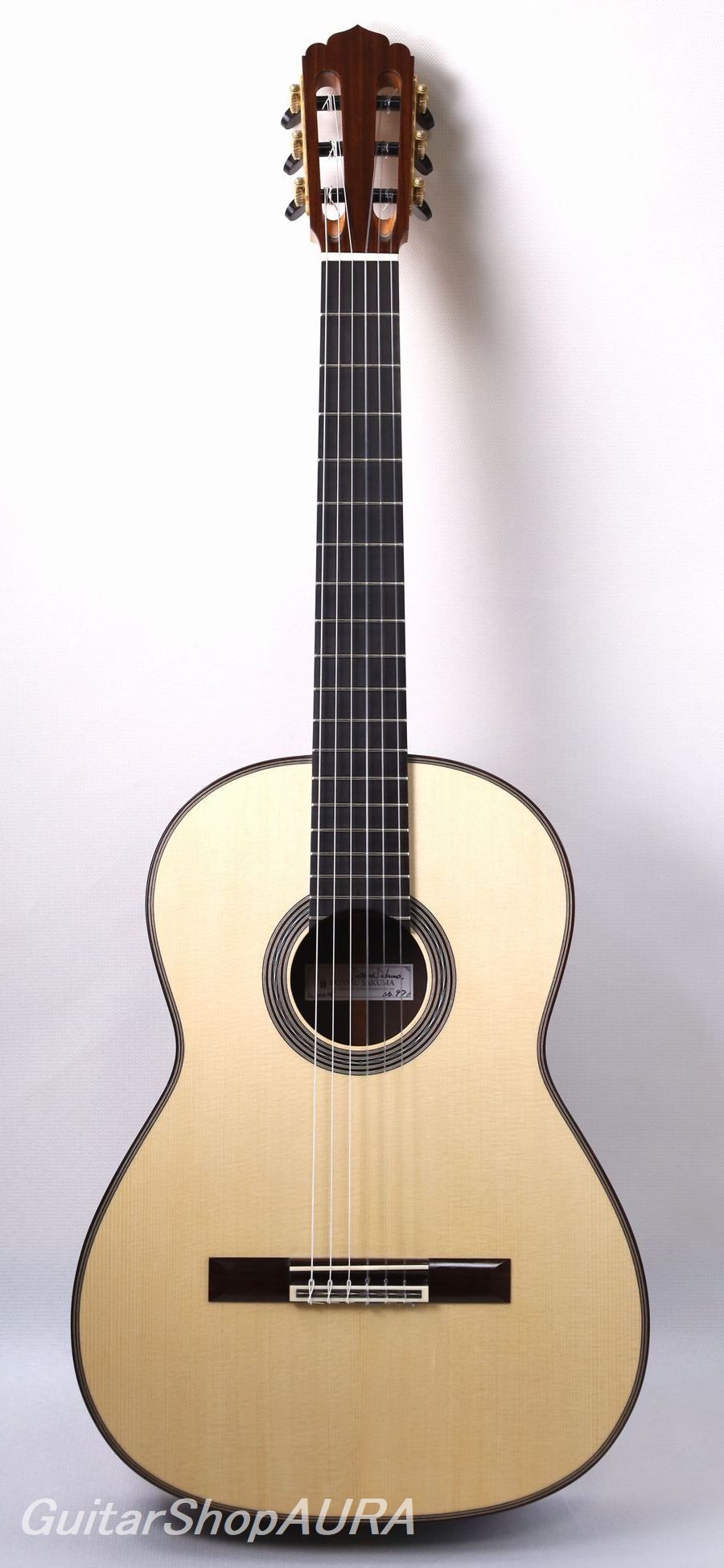
| Instrument | Satoru Sakuma |
| Category | Japanese Classical Guitars 〔New〕 |
| Number/Model | Class80 Romanillos Model No.97 |
| Scale length | 650mm |
| Country | Japan |
| Year | 2025Year |
| Top | Solid Spruce |
| Side&Back | Solid Indian Rosewood |
| Condition※ | 10 |
| List price | ¥880,000 |
| Price (tax included) | Please Inquire |
| option | Without case |
Click to enlarge the photos below
Neck: Cedro
Fingerboard: Ebony
Finish(Top): Shellac
Finish(Back & Sides): Shellac
Tuning Machines: Gotoh
String Height(1st): 2.8 mm
String Height(6th): 4.0 mm
【Maker Information】
Satoru Sakuma was born in 1973 in Ueda City, Nagano Prefecture, Japan. He continues to craft instruments in his workshop there. He developed an interest in instrument making while studying Spanish at Kansai Gaidai University. Around age 20, he sought guidance from Ei Ishii, a luthier with a workshop also in Nagano Prefecture. After graduating, he continued making instruments independently while working for a company. In 2001, he traveled to Spain and attended a masterclass by the renowned luthier José Luis Romanillos in Llagostera (near Figueres), where he received direct instruction. He also received advice from Gerhard Oldiges and others who assisted at the seminar. Inspired by their dedication to traditional craftsmanship, he affirmed his own direction. Since returning to Japan, he has been making instruments based firmly on the traditional Spanish methods.
His instruments—both originals and replica models—consistently feature a mellow, rounded tone and a rustic sound that directly conveys the resonance of the wood. This reflects his tonal preference and offers a unique feel that particularly suits Japanese tastes. He is a luthier whose reputation and popularity have grown steadily in recent years among both professionals and amateurs.
【Instrument Information】
We have received a new 2025 model No.97 of Satoru Sakuma’s Romanillos Model No.80. Along with his Boucher model, this is considered one of his flagship models. It is based on the guitars of José Luis Romanillos, one of Spain’s foremost master luthiers, making it a special instrument for Sakuma, who studied directly under Romanillos in Spain. In this piece, Sakuma creates a rigorous yet fresh homage model, confronting Romanillos’ aesthetics with even greater clarity than before (where previously he had leaned slightly towards his own preferences) and boldly pursuing the ideal sound.
Instead of Romanillos’ famous Spanish mosque column-inspired rosette design, Sakuma has chosen his original design featuring concentric circles and herringbone patterns. The motif uses brown, black, and cream colors—calm but sharp—with finely detailed elements that tightly unify the overall design. The near-white cream spruce top contrasts beautifully with the chocolate-colored Indian rosewood back and sides. The finish is delicate shellac with a subtle matte sheen, achieving a unified appearance without any slack.
The plucking elasticity converts into a sound characteristic of Romanillos, but Sakuma imparts a considerably firm resilience, giving a tactile response that seems to cling to the fingertips. The tone is clean without impurities, subdued in color, and expressive solely through variations in the texture of the sound image. The resonance between strings (voices) has a depth reminiscent of early music ensembles, with a pleasant tension that is very Romanillos-like.
The top bracing consists of two harmonic bars above the soundhole (neck side) and one below (bridge side). Thin reinforcement strips about 1cm wide are glued on both sides of the soundhole—a rare feature given the narrow width. Seven symmetrical fan braces are installed, with two closing bars arranged in a V shape to support the brace tips near the bottom. A thin reinforcing plate covers the bridge plate area. The peones (small wooden blocks joining the top and sides, triangular in cross-section) are unusually small compared to standard guitars. The resonance is set just below F#.
The neck is a rounded D-shape close to a C-shape, made thin for a compact grip feel. String height at the 12th fret is 2.8 mm for the 1st string and 4.0 mm for the 6th string, with a saddle surplus of 1.5 to 2.0 mm, allowing further adjustment to lower string action if desired. The tuning machines are Gotoh 510 series.